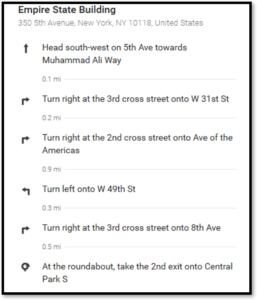 It’s surprising how a majority of top business owners use the terms policy, process & procedure interchangeably. Incorrectly defining the objectives associated with these three pillars of business could affect overall productivity. It can also degenerate the profits of your company through inefficiencies.
It’s surprising how a majority of top business owners use the terms policy, process & procedure interchangeably. Incorrectly defining the objectives associated with these three pillars of business could affect overall productivity. It can also degenerate the profits of your company through inefficiencies.
3 Ways “Policies” are an Integral Part of Your Business:
A policy is a set of guidelines governing an organization or business. Policies serve as strong sources of internal control in your business. Therefore, it defines and captures the scope within necessary decisions can be taken. Policies also highlight a disciplinary course of action to follow when employees do not adhere to the “laws”.
A business policy must be clear in its statements. Accordingly, it should be specific, appropriate and most importantly, flexible.
- It minimizes costs: With well-written policies in place, your employees know how to minimize potential sources of resource cost without compromising on quality.
- Accountability: Maintaining clear, well-defined policies helps your company maintain accountability to your stakeholders. Thus, your newly hired and trained employees prove that you are committed to ethical human resource practices.
- Job description: Employees in each position know the expected behavior and how to interact with others inside and outside the organization.
2 Challenges Associated with Establishing Your Business Policies:
- Adapting to necessary changes: Stringent business rules make changes difficult to incorporate. Today, younger workforces are joining organizations. In addition, competition and newer and efficient ways of completing jobs are increasing. As a result, it is imperative that policies receive timely updates and changes.
- Lacks exhaustive coverage: No matter how robust and exhaustive business policies are, it’s nearly impossible to cover every situation that may arise. Consequently, business policies provide a limited and narrow framework for decision making.
Process – A Road Map for Implementing Your Organizational Objective:
The process is the road map or guidelines for accomplishing a particular organizational objective. It is sequential tasks to complete in order to achieve an organizational goal. Therefore, a process should either directly or indirectly add value to a service/product. There are three main types of processes:
- External Processes – Arguably the most fundamental and important process because it involves direct interaction with the customers. Therefore, a primary process should add value to the product and exceed the expectations of the customers.
- Internal Process – This is how the work flows within the organization; behind the scenes. Since these are your lead indicators, internal intervention is possible to affect customer and financial outcomes.
- Management Process – It controls and regulates business activities including training timetables, hiring processes and self-learning processes. Therefore, management processes ensure alignment of the primary and support processes to meet organizational goals.
3 Reasons Why You Need Processes
- It makes your business more competitive: A company with a well-defined process tends to know its strengths and weaknesses better. Processes help improve the quality of a product or service and thus help increase customer satisfaction and customer loyalty.
- Processes boost profits: A well-defined process increases the profitability of your company by improving efficacy and efficiency without sacrificing quality of services or products.
- It helps your company grow: Processes help new employees know the course of action for accomplishing an organizational goal. It serves as a blueprint for newly hired employees and prevents production interruptions in case of employee sickness or unavailability.
Procedure – The Finer Implementation Details:
A procedure is a step by step detailed course of action pertaining to a particular business activity. Procedures are implemented by an individual or a team and must remain within organizational boundaries and policies. Procedures are often mistaken and used interchangeably with “work instruction”. A work instruction is the lowest level or the minutest detail of “how” to perform each step to accomplish a task.
2 Reasons Why You Need Procedures
Among the innumerous benefits, there are two significant reasons to have a well-drafted procedure in place:
- Improves efficiency of your business and cuts unnecessary costs: Procedures help in identifying and eliminating unnecessary and redundant organizational activities thereby reducing overall operational costs. Documenting and re-documenting existing procedures will open up opportunities to make your business more efficient and generate more revenue.
- Improves resource utilization: With well-defined procedures in place, each employee on the team knows exactly what to do and how to do. This improves overall resource utilization, time complexities, and cooperation within the team.
An Everyday Illustration to Explain the Importance of Policy, Process & Procedure:
 Goal: Suppose you want to travel from place A to place B by your car.
Goal: Suppose you want to travel from place A to place B by your car.
Policy: Policy is comparable to the driving rules or laws the driver must adhere to. It restricts you from erratic behavior on the road. When driving rules (policies) are broken, clearly defined disciplinary actions are in place.
Process: The process is comparable to a bird’s eye view map to help you reach your destination. This is typically a line showing you how to get from point A to point B. Sometimes (when you are very familiar with the process) you are able to accomplish your goal simply by looking at this bird’s eye view. However, most of the time you will need detailed directions taking you step by step through the map.
 Procedure: The procedure is comparable to the finer details of every path, the alternate route or turns you need to take to reach your destination. Most people can follow a set of instructions. First, they need to know where they are going. Knowing where the final destination will be is imperative. Therefore organizations must have defined both policies and procedures. In addition, the work instruction would include even more in-depth details such as how to turn on your vehicle, how to operate the car, etc.
Procedure: The procedure is comparable to the finer details of every path, the alternate route or turns you need to take to reach your destination. Most people can follow a set of instructions. First, they need to know where they are going. Knowing where the final destination will be is imperative. Therefore organizations must have defined both policies and procedures. In addition, the work instruction would include even more in-depth details such as how to turn on your vehicle, how to operate the car, etc.
Conclusion
Without a proper policy, process & procedure in place, employees may lose focus and remain under-utilized which often leads to inefficiencies and ultimately reduced profits. Policy, Process & Procedure are ALL vital ingredients for successfully and efficiently accomplishing a business activity. A well-drafted policy, process & procedure ensures that you maintain an acceptable, quality product and/or service on a consistent basis.


